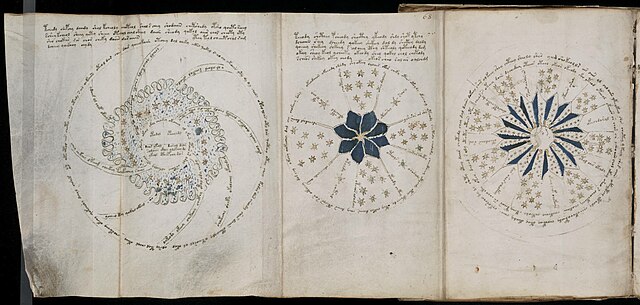The Voynich manuscript is an illustrated codex, hand-written in an unknown script referred to as 'Voynichese.' The vellum on which it is written has been carbon-dated to the early 15th century (1404–1438). Stylistic analysis has indicated the manuscript may have been composed in Italy during the Italian Renaissance. While the origins, authorship, and purpose of the manuscript are still debated, hypotheses range from a script for a natural language or constructed language, an unread code, cypher, or other form of cryptography, or perhaps a hoax, reference work, or work of fiction currently lacking the translation(s) and context needed to both properly entertain or eliminate any of these possibilities.
A floral illustration on page 32
Retouching of drawing on page 131; f72v3
Page 119; f66r, showing characteristics of the text
Page 191; f107r, text detail
A constructed language is a language whose phonology, grammar, and vocabulary, instead of having developed naturally, are consciously devised for some purpose, which may include being devised for a work of fiction. A constructed language may also be referred to as an artificial, planned or invented language, or a fictional language. Planned languages are languages that have been purposefully designed; they are the result of deliberate, controlling intervention and are thus of a form of language planning.
Page 68r of the Voynich manuscript. This three-page foldout from the manuscript includes a chart that appears astronomical.





